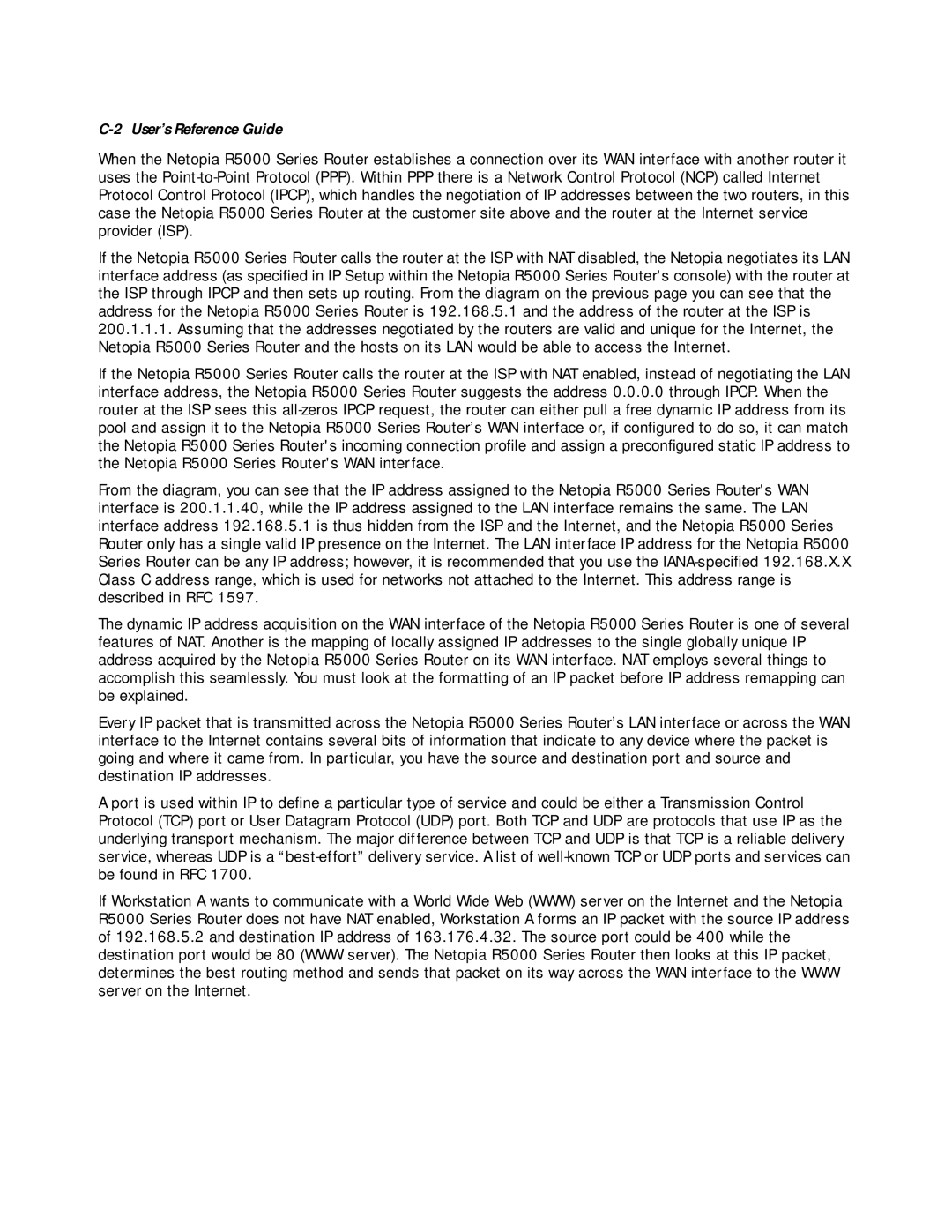C-2 User’s Reference Guide
When the Netopia R5000 Series Router establishes a connection over its WAN interface with another router it uses the
If the Netopia R5000 Series Router calls the router at the ISP with NAT disabled, the Netopia negotiates its LAN interface address (as specified in IP Setup within the Netopia R5000 Series Router's console) with the router at the ISP through IPCP and then sets up routing. From the diagram on the previous page you can see that the address for the Netopia R5000 Series Router is 192.168.5.1 and the address of the router at the ISP is
200.1.1.1.Assuming that the addresses negotiated by the routers are valid and unique for the Internet, the Netopia R5000 Series Router and the hosts on its LAN would be able to access the Internet.
If the Netopia R5000 Series Router calls the router at the ISP with NAT enabled, instead of negotiating the LAN interface address, the Netopia R5000 Series Router suggests the address 0.0.0.0 through IPCP. When the router at the ISP sees this
From the diagram, you can see that the IP address assigned to the Netopia R5000 Series Router's WAN interface is 200.1.1.40, while the IP address assigned to the LAN interface remains the same. The LAN interface address 192.168.5.1 is thus hidden from the ISP and the Internet, and the Netopia R5000 Series Router only has a single valid IP presence on the Internet. The LAN interface IP address for the Netopia R5000 Series Router can be any IP address; however, it is recommended that you use the
The dynamic IP address acquisition on the WAN interface of the Netopia R5000 Series Router is one of several features of NAT. Another is the mapping of locally assigned IP addresses to the single globally unique IP address acquired by the Netopia R5000 Series Router on its WAN interface. NAT employs several things to accomplish this seamlessly. You must look at the formatting of an IP packet before IP address remapping can be explained.
Every IP packet that is transmitted across the Netopia R5000 Series Router’s LAN interface or across the WAN interface to the Internet contains several bits of information that indicate to any device where the packet is going and where it came from. In particular, you have the source and destination port and source and destination IP addresses.
A port is used within IP to define a particular type of service and could be either a Transmission Control Protocol (TCP) port or User Datagram Protocol (UDP) port. Both TCP and UDP are protocols that use IP as the underlying transport mechanism. The major difference between TCP and UDP is that TCP is a reliable delivery service, whereas UDP is a
If Workstation A wants to communicate with a World Wide Web (WWW) server on the Internet and the Netopia R5000 Series Router does not have NAT enabled, Workstation A forms an IP packet with the source IP address of 192.168.5.2 and destination IP address of 163.176.4.32. The source port could be 400 while the destination port would be 80 (WWW server). The Netopia R5000 Series Router then looks at this IP packet, determines the best routing method and sends that packet on its way across the WAN interface to the WWW server on the Internet.
